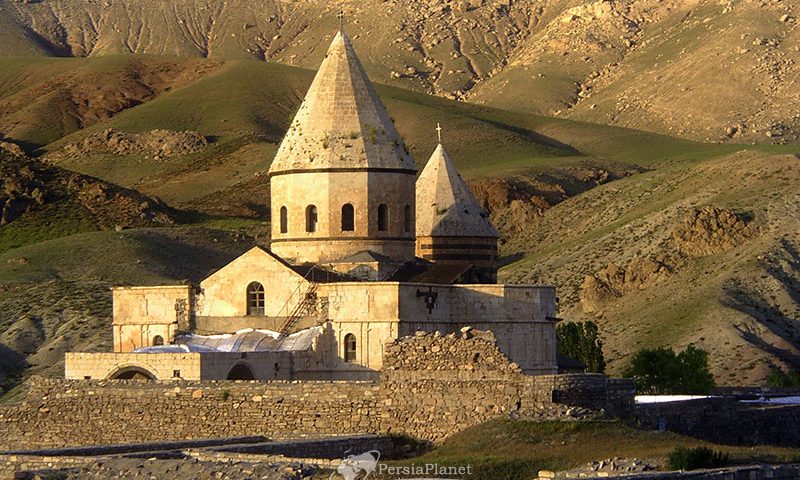Saint Thaddeus Cathedral, Qare Kelisa, Qareh

Saholan Cave
November 8, 2020
Marmisho lake
November 8, 2020Saint Thaddeus Cathedral (Qara Kelisa) is an Armenian religious building located in the south of Mako and 20 km northeast of Chaldoran next to a village of the same name. Qara means “black” in Azeri and the name of this name is black because it is a part of the church. Apparently, the main building of the church is made entirely of black stone, which has been replaced by white stone after some of the stones have been rebuilt. Most likely, this action was done intentionally so that future generations would be aware of the original shape and appearance of the church.
This church has been destroyed and rebuilt in different periods for various reasons. In 1230 AD (616 AH) during the invasion of Genghis khan, a large part of the church was destroyed, but during the stay of the Mongol Holako-khan in Azerbaijan, Khajeh Nasir al-Din Tusi tried to restore it. This church was destroyed once in an earthquake that occurred in 1319 AD, and according to the narration of “Andranik Hoyan“, there is a document about its repair by St. Zakaria in 1329. This church was built with black stones in 1691 AD, in 1810 by Bishop of Mako, named Simon Beznoni with the installation of white stones, and during the Qajar period by Abbas Mirza.
Qara Kelisa has a special feature of Armenian architecture and is one of the most valuable historical monuments in the country in terms of volume and technique. This building is world famous and many Armenians inside and outside the country come to this church for religious ceremonies.
Thaddeus or Tataeus (Tataus) is one of the apostles of Christ who came to Armenia in the year 40 AD and preached Christianity. Many groups converted to Christianity, including King Sanatrok of Armenia and his daughter Sandokht. But the sultan later repented and opposed the new religion, ordering the assassination of Thaddeus, Sandokht (his daughter), and another group of Christians (about 3,500 person).
In 302 AD, during the reign of Tirdad, one of the kings of Armenia, Christianity became the official and universal religion in this country. Armenian Christians, who have preserved the memory of the martyrdom of Thaddeus and Sandokht for generations, built churches in their place of escape, of which Qarah is one of them. According to the Armenians, the Church of Tataeus is the first church in the world to be built by the order of the evangelists and apostles of Christ. The murder of St. Todd and his Christian followers is held in a special ceremony in Qara.
However, today, on the occasion of the annual celebration, this church is a meeting place for Armenians in Iran and even neighboring countries. In the last week of July, Armenians from Tabriz, Urmia, Tehran, Isfahan, Qazvin, etc. come to Qara-Kelisa as a group and as a family. In addition to Armenians, Assyrian families, and rarely Catholic families, also attend.
Mehdi Gholami.










